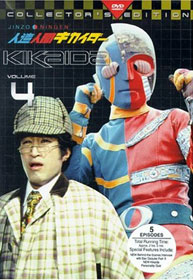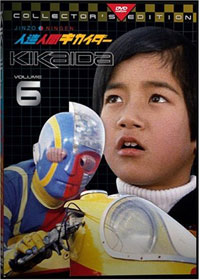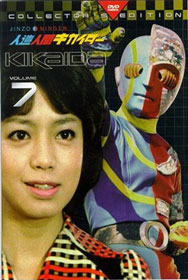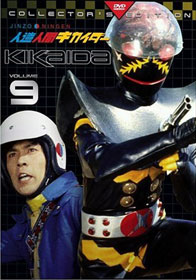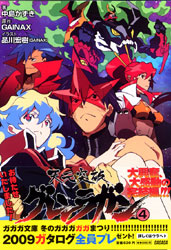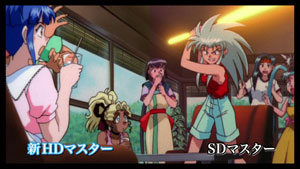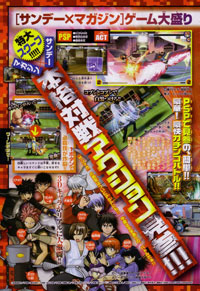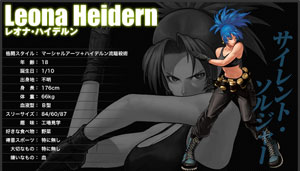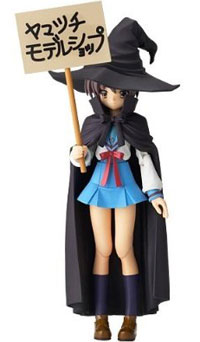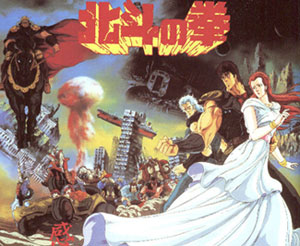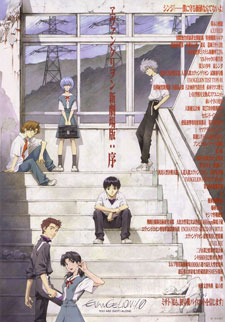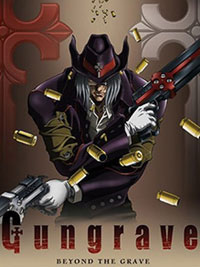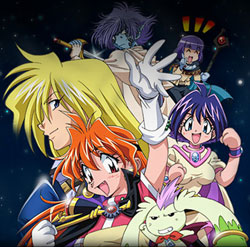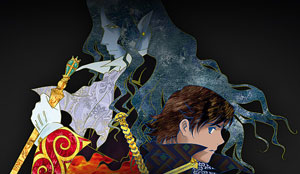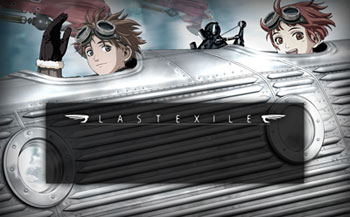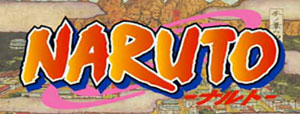 Logo handmade by Bannister
Column by Scott Green
Logo handmade by Bannister
Column by Scott Green
It's New To Me... Tokusatsu
It's the time of year to compile "Best Of" retrospectives, and once again I've opted out of participating. While I agree that these lists can be useful, I'm not entirely enamored with the concept. Various outlets suceeded in drawing attention to the eminently worthy Town of Evening Calm, Country of Cherry Blossoms with last year's manga lists. That's the best you can hope for in a "best of list." More often they seem to be an exercise in marking yourself against the conventional wisdom. The effort to rank superlatives in such a way as to serve the readers and the subjects is too often compromised by ego and the desire to draw attention. Instead of surveying my reviews from the past year, I allocated the holidays to attempting to fill in one of the gaps in my familiarity with Japanese pop media. Specifically, I was hoping to correct the fact that I haven't seen many tokusatsu television series. "Tokusatsu," is an umbrella term for works that are driven by their special effects. The early thread in the story of tokusatsu is probably the one that I knew best going into this exercise. In 1954, working with director Ishiro Honda, Eiji Tsuburaya gave birth to the genre of kaiju or "monster" films. (I haven't read it yet, but August Ragone's Eiji Tsuburaya: Master of Monsters seems like the book to read on the subject). As powerful as Godzilla's atomic age metaphor might be, the crucial object of fascination is the man in the suit crushing miniatures cities, and those special effects developed into a vital tool for telling stories. Illusions created with camera placement and models, reversing the ordering of film, and rigging pyrotechnics in rock quarries would bring subjects from the flying drill nosed submarine Atragon to animated, colossal samurai statue Daimajin to the screen. The geek mania for classification can find a deep subject in which to dive into with tokusatsu. Wikipedia notes that within the class of kaiju eiga (movies), subsets include kaiju, kaijin (referring to roughly humanoid monsters) and daikaiju (giant monsters). Then, within specific monster franchises, you can break down the history the monster into eras and movements. For example, Godzilla films can be broken down into the Showa series (50's-70's), the Heisei series (70's - 90's) and Millennium series '99-'04). I'm far from a Godzilla ace, but I can articulate some differences between a Showa Godzilla and a Millennium one and I know the difference between King Ghidorah and King Caesar. Beyond that, my exposure to tokusatsu films is reasonablely extensive for a casual fan. I've seen a bit of the late 60's Yokai Monster films and Takashi Miike's remake/homage, The Great Yokai War. I've seen some space films like Sayonara Jupiter and the Toei/MGM co-production The Green Slime. I've seen some of the recent disaster films such as The Sinking of Japan and The World Sinks Except Japan. The considerable gap of my tokusatsu resume has been the televised works. Tokusatsu heroes made their debut on Japanese TV in 1958 with Kawauchi Kohan's masked vigilante Moonlight Mask. Despite its popularity, Moonlight Mask met an unceremonious end in July 1959, when the series was cancelled due to liability issues concerning children imitating Moonlight Mask's stunts. In 1966, Eiji Tsuburaya would begin working on Ultra Q, a TV anthology of horror/sci-fi stories structured around a group of investigators looking into kaiju related phenomena. This first of the Ultra series would lead into the introduction of one of the most famous tokusatsu sci-fi heroes, Ultraman. In the future (1993), human society is under assault by malevolent, titanic beings, but, in our defense, we have the Science Patrol and brave Hayata who uses the Beta Capsule to transform into 40 meter tall red and silver hero, Ultraman. You'll find that many of these tokusatsu have a burden or potentially tragic limitation. In this case, the dramatic hitch is that Ultraman's life force depends on a slim supply of solar energy. If his battle outlasts his supply, the lives of Ultraman/Hayata will be extinguished. The popularity of Ultraman and his genre of super-sized Kyodai Heroes would not be subject to any such limitations. The Ultra franchise would span 26 TV and direct to video/DVD series to date, as well as movies and anime. As an interesting historical note, Ultraman was beaten to the notoriety of being Japan's first televised color tokusatsu by the airing of Osamu Tezuka created Ambassador Magma, which aired six days before Ultraman's premiere. That series would be shown in America as The Space Giants. Other prominent tokusatsu hero franchises include Kamen Rider Series - Begun in 1971 Shotaro Ishinomori's grasshopper-esque masked motorcyclist. See Kamen Rider Dragon Knight below for more. Super Sentai - Begun in 1975, the Toei and Bandai produced stories of mecha equipped "task forces". These began with the Shotaro Ishinomori created Himitsu Sentai Goranger (Secret Squadron Five Rangers) and would become the basis for the Power Rangers franchise. As someone who's been known to watch a cartoon or two, I've caught bits of Power Rangers, but I've never seen that much or made an effort to watch it. Right now, I don't have any Super Sentai on my tokusatsu agenda. Any suggestions? Metal Heroes - Begun in 1982 with Uchuu Keiji Gavan, these metal, transforming law enforcement officers have included the sources for Big Bad Beetleborgs (Juukou B-Fighter) and VR Troopers (Metalder, Spielvan and Shaider). In these, we see the prints of Ishinomori again, particularly in Choujinki Metalder, which was inspired by Kikaider (see below). These are interesting times to be dipping into tokusatsu. We are learning that "recession proof" is a spurious concept as every industry is touched by the global economic troubles. Niche media is certainly no exception. As it applies to tokusatsu , we've already seen Navarre close the BCI unit responsible for releasing Ultraman, The Super Robot Red Baron and Iron King. At the same time, there are still initiatives to release tokusatsu to an interested North American audience. Generation Kikaida has recently begun airing Inazuman. And, tokusatsu are still being adapted for broader audiences, Kamen Rider Dragon Knight being the primary beacon on the immediate horizon.
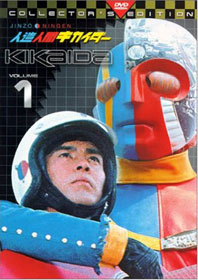
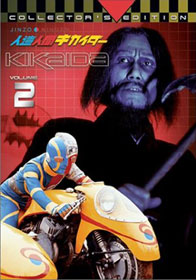
Tokusatsu Spotlight: Kikaida (or Kikaider) Released by Generation Kikaida
The 43 episode Kikaida aired starting in July 1972. It was the first superhero tokusatsu to commence episodes with a safety message about trying to duplicate its stunts, but it's not really a show distinguished by introducing a cornerstone innovation. Instead, Kikaida is a fascinating demonstration of a creative mind's ability to invent from elements floating around the zeitgeist. Shotaro Ishinomori, mentioned above in relationship to his founding of Power Rangers and Kamen Rider, served as the Doctor Frankenstein who stitched together the pieces that brought a sci-fi hippy to life. The jinzo ningen/artificial human serving as the subject is Jiro. Created in the DARK labs of the demonic Professor Gill, Dr. Komyoji creates an android governed by an incomplete conscience circuit. Komyoji's Pinocchio, Jiro escapes Professor Gill's lab with the mission of protecting Komyoji's son and daughter, as well as thwarting Gill. As Jiro, actor Ban Daisuke (Dr. Ikuma in the Ring movies) plays a young, denim clad man, travelling the lonely roads on his yellow motorcycle, red guitar strapped to his back. But, when the hordes of naginata-spear wielding DARK androids and ferocious Destructoids, from Blue Buffalo and Red Condor to Carmine Spider and Green Sponge, attack, Jiro yells "Change! Switch on! 1-2-3!!," where upon his body metamorphoses into the bichromic Kikaida, a half blue, half red robot with the asymmetry emphasized by a circuit shell protruding out of the red side of his face. Then, it's time to thrown down and double chop the flame spewing jaguar or body throw the child stealing, walking angler fish.It's critical in this conversation to recognize the importance of Shotaro Ishinomori (January 25, 1938-January 28, 1998) as a seminal figure in the development of sci-fi superhero tokusatsu. While Ishinomori would deserve deference if he were strictly the Stan Lee of bug masked motorcyclists, color coded martial artists, and anti-arms proliferation cyborgs, his career should not be reduced to simply the mind behind the franchises. In the mid-50's, as manga was establishing its foothold as a mass media phenomena, as the weekly manga anthology became a viable commercial venture, Ishinomori gained notoriety through a Manga Shonen talent contest. Along with a class of young artists who would become legends in their own right, such as perennially popular Doraemon's Fujiko Fujio (pen name for Hiroshi Fujimoto and Motoo Abiko), Ishinomori moved to Tokyo to work under and around Osamu Tezuka. Like his mentor, Ishinomori proved to be almost superhumanly prolific. According to Frederik Schodt's Manga! Manga!, Ishinomori once drew over 500 pages of manga in a month. In January 2008, the Guinness World Records credited Ishinomori with "the record for most comics published by one author (total of 770 titles included in 500 volumes)". And like Tezuka, Ishinomori developed a staggeringly diverse body of work. North American fans who know Ishinomori know him for his superheroes, or from his The Legend of Zelda: A Link to the Past manga that ran in Nintendo power. This is the tip of the iceberg. He was involved in the early stages of the establishment of shoujo as a manga genre. He also won awards and adult readers for Hotel, about the day to day functioning of a high class hotel, period detective tale Sabu to Ichi Torimono Hikae, and Sandarabotchi about a bamboo artist/tax collector. North America has seen glimpses of Ishinomori's work . The 2001 anime version of his X-Men like multi-ethnic heroic exiles Cyborg 009 aired on Cartoon Network and was partially released on DVD by Columbia TriStar Entertainment. From 2003 to 2005 TOKYOPOP released 10 volumes of the 36 volume Cyborg 009 manga (releasing a classic like this in a flood of modern titles was part of the character of the wild days of the manga boom). Before that, one of TOKYOPOP's first right to left ordered "Authentic Manga" publications was Kazuhiko Shimamoto's remake of Ishinomori's proto-Kamen Rider, Skull Man. On the anime front, ADV released Ishinomori older-age oriented could war espionage 009-1, whose name is a play on Cyborg 009 and a pun on kunoichi (ninja woman). (The title was reviewed in this column: volume one volume two two). With the dissolution of ADV's relationship with Sojitz, 009-1's license has moved to FUNimation. Outside of Hawaii, where tokusatsu enthusiasm has thrived since the 70's, Kikaida was introduced to American fans through the relatively more recent anime and manga. In 2003 Bandai Entertainment released Tensai Okamura's anime adaption of Kikaida (using the Kikaider spelling) as well as the Kikaider 01 follow-up. The anime would also air on Cartoon Network's Adult Swim. In 2005, CMX would begin releasing Meimu's Kikaider Code 02 manga remake of the story. Less apparent to anime and manga fans, in 2003 Hawaii based Generation Kikaida began releasing English subtitled DVDs of Kikaida. If you know Kikaida from the anime or manga, you've experienced the post-Evangelion Kakaida. The battle between Komyoji and Gill for Jiro's soul has always been the work's dramatic core. The fact that Jiro has had to struggle with the incomplete protection against Gill's influence afforded by his partial conscience circuit has likewise always been a visibly evident source of anguish for the character. The difference between Ishinomori's original and later incarnations is how leaden this struggle becomes. The anime advanced Jiro's existential struggle to the forefront. He'd slump against a tree, reach for a butterfly and question who he was. I admire the anime's design, which worked from the stylistic touch points of Ishinomori's manga, but I can also see why many found it to be laborious. The manga was situated in a dark, almost biblically corrupt world. Both the anime and manga emphasize the burden of being Kikaida. In contrast, Ban Daisuke presents a smiling, charismatic Jiro. The fact that Jiro's motorcycle has a side car supports the logistics of countless scenes, but it also reflects the nature of the character. Jiro is a singular being, meant to struggle through his imperfections. However, he's also a noble spirit, quick to come to the aid of those in need. He's often alone, but he's not necessarily a loner. In the TV series, Jiro grabs his head and winces as Professor Gill blows into his flute/staff. Because of its structure and re-use of footage, Kikaida is a tokusatsu show that establishes a ritual. There are steps leading up to an episodic climax, and part of the formula is the dark moment of menace prompted by Gill's call, suggesting that Jiro may become incapacitated or evil. However, that dark moment also heralds Jiro's transformation into Kikaida. This is a suffering character with whom the view can empathize. There is a particular trough in the series overarching narrative in which Jiro is stripped of his ability to interact with human and accused of crimes by the police and his family. It's a dark moment for the character, but it's also more Superman than Sartre. The differences between the anime/manga and the original TV series are both a function of time and audience. While the anime and manga were intended for older, Kikaida-aware fans, the TV series was created with children in mind. With that intended audience in focus, it keeps itself running on quick, episode long revolutions. There is an overarching plot. Komyoji's young adult daughter Mitsuko and grade school age son Masaru search for their father as he wanders in an amnesiac daze. Late in the series, a new running plot emerges when Gill's efforts to remove Kikaida from the field result in the creation of Jiro's "younger brother" Saburo, also known as the black, gun slinging cyborg Hakaida (a Shadow the Hedgehog decades before Sonic ran onto video game consoles, but compellingly complex). At the same time, character evolution is far from alien to the series. Ninja/private eye Hattori Hanpei remains comedy relief throughout. The far removed descendant of the shogun's ninja Hattori Hanzo is always wearing a deerstalker cap, threatening to ninjitsu foes with a golf club and licking the steering wheel of his Subaru 360 to coax the car to start. However, while Hanpei starts the series with some horrific ploys for money, he later becomes an almost heroic figure in his efforts to aid Komyoji's children. Episodic storytelling is often cause for criticism amount fans of genre media. When the structure of a show is referred to as "monster of the week," it's generally intended as a negative remark. This is cause for some friction between the expectations of enthusiasts and the realities of works that are older or originally intended for a different demographic. In manga, you see this with Tezuka's works such as Astro Boy or Black Jack, where the chapter-based, non-novelistic approach of the manga is a liability for some North American readers. Looking at Kikaida, there is something admirable, almost poetic, in the way that it adherers to the episodic structure. The first episode of the show is mostly the beginning, middle and end of Kikaida's fight with "monster of the week" Gray Rhino King with the introductions of the premise and characters artfully worked into the margins. This episodic structure likely benefited Kikaida in approaching its original audience. In speaking about video games for children, John Davison of What They Play suggested that enthusiast press critics frequently don't appreciate how young audiences take to repetition. Someone who's older might not care for repeating the same task in a game or a show with a predictably placed transformation sequence, but that clockwork might offer the younger audience the right handle for latching onto the subject. So, if you're a modern anime/manga and/or genre fan considering Kikaida for the first time, what does it offer beyond historical significance? There is sophistication to Jiro's predicament and late drama with Hakaida, but if you're seeing Kikaida now, this is more likely to serve as the garnish rather than the substance of the work. The appeal of an ironic viewing of Kikaida is considerable. Watching Professor Gill place a detonating belt around a lab monkey, then blowing up the critter, or reading a description like "Episode 24 - Pink Armadillo: Sinister Temptress - Pink Armadillo transforms itself into a voluptuous woman to entice men and implant control devices in their brains" are sure to provoke snickering. These ideas that you can, and probably will, laugh at are now part of what distinguishes a 70's tokusatsu like Kikaida. It's impossible to imagine creating a foe like Skeleton Flying Squirrel in the 00's without it being the product of a terribly self conscious decision. The unfiltered Kikaida produced a Skeleton Flying Squirrel and makes that as-odd-as-it-as sounds baddie a fearsome opponent for the hero. While you're laughing at Kikaida, you have to give it some acclaim for running with its vivid imagination. A great quality of 70's tokusatsu is the human imprint on the work. You can almost see the mental process at work on the screen. A personal favorite are the scenes where Kikaida or a Destructoid burst out of some substance, such as sand or water. These are obviously cases of reversed film of a guy in a suit jumping in, but considering the process by which the show's producers thought up the scene and realized it with the limited tools on hand becomes part of the joy of watching a show like Kikaida.
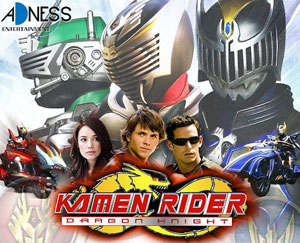
Tokusatsu Spotlight: Kamen Rider: Dragon Knight From Adness Entertainment To air on The CW Starting 1/3/09
The name of Kamen Rider Dragon Knight's hero, Kit Taylor sounds to me a bit like "Clark Kent." It's a remarkably bleached moniker; something that an alien from Krypton would call himself if he landed in Middle America. With a glaringly current hair style, Stephen Lunsford certainly looks the part. Dialog that emphatically references "Way Above Top Secret dot com" and emo bear t-shirt raised my concerns that Dragon Knight would have a product manager designed model for how to appeal to its viewers and that it would be merciless in establishing the bullet points outlined in that model. By the end of a three minute trailer and two episodes, I was convinced that Dragon Knight will be one of the few shows that I make some effort to follow on TV. The plot concerning a general who conquered the world that exists on the other side of mirrors, who has corrupted a cadre of super powered knights to act as the vanguard for pulling people from our world into his to serve as slave labor.... it doesn't sound like it has quite the lethal heft of its source material, but it certainly registered on my geek radar for promising genre works. In the mid 60's Toru Hirayama began working to develop a TV adventure starring a masked hero. By the end of the decade, he approached Shotaro Ishinomori and considered basing his show on Ishinomori's vengeance driven anti hero-Skull Man, but ultimately opted against using the violent spirit of Ishinomori's work. By 1971 Ishinomori had reworked the premise. Rather than a skull, his hero would have the face of a different object of boys' fascination, a bug, specifically a grasshopper. And like Kikaida or the heroes of Cyborg 009, this kamen ("masked") motorcyclist hero was alone in a battle against the sinister architect of his creation. In this case, biochemistry student Takeshi Hongo was able to escape the evil organization known as Shocker's attempt to turn him into a cyborg agent. Freed before his will and conscience were scheduled to be removed, Hongo turns his ability to undergo a heshin (transformation) into the superpowered Kamen Rider 1 against his would-be masters. Kamen Rider became a hit, and that popularity has endured long enough to spawn eighteen television series. In theory this should have translated internationally. The notion of a bug faced, motorcycle riding martial artist is sure to elicit a kid's "wow" response in any language. But, at least as far as North American audiences are concerned, the franchise never presented itself in the right way for the right opportunity. Jumping to the general focus of this column for a moment, there are a number of internationally popular anime series that have only garnered North American audiences among the region's Japanese pop media enthusiasts. Noteworthy examples include Fist of the North Star and Saint Seiya. These don’t make for perfect comparisons with Kamen Rider due to the graphic nature of their violence, but the lesson of these anime's inability to find an audience beyond a slim niche is largely applicable to Kamen Rider. The issue wasn't so much that these works have little intrinsic appeal to American audiences, so much as that they weren't presented to those audiences at a time in which they would be receptive. If you show Saint Seiya, with its Mad Max and 80's pro-wrestling aesthetic and 15 year old production values to Cartoon Networks viewers in 2003, by in large, they are going to reject it. In 1996, Saban attempted to present Kaman Rider as Power Rangers spin-off Masked Rider, using footage from 1993's Kamen Rider ZO and 1994's Kamen Rider J. It wasn't the mismatch of showing Saint Seiya to a 2003 Cartoon Network audience, but again, it did not present the right show for the right opportunity. For 2009, Kamen Rider will take another crack at finding its opportunity. This time it is through the Michael and Steve Wang (director of the live action Guyver movie) produced Kamen Rider: Dragon Knight. Like the Power Rangers model, Dragon Knight has filmed a story with its own cast around tokusatsu footage of the masked heros in action. In this case lead writer Nathan Long has scripted an original narrative as the framework for 2003's Kamen Rider Ryuki, an entry in the franchise distinguished by the inclusion of 13 Kamen Rider characters. I'm not going to hazard a guess as to whether Dragon Knight will produce a generation of Kamen Rider fans or if any of the viewers are going to go out and purchase Generation Kikaida's release of Kamen Rider V3 (the English subtitled release of the 1973 show presents one of the few well regarded versions of the show available to North American fans). Similarly, while I can notice an appreciate the significance of the bug-like appearence of the hero's pre-powered-up Kamen Rider form, I'm not in a position to compare Dragon Knight to Ryuki or assesses how well it conforms to the spirit of Kaman Rider shows. In other words, I wouldn't presume to suggest how a tokusatsu would react to Dragon Knight. What's promising in the first two episodes of Dragon Knight seems to be what's been the core of Kaman Rider. Against the advice of the mysterious veteran Len/Kamen Rider Wing Knight (played by martial artist Matt Mullins), Kit Taylor holds onto an Advent Deck that allows him to travel into the mirror world, transform into a Kamen Rider and summon weapons. And against Len's advice, he makes some sort of contract with the dragon that began pursuing him in the mirror world, becoming the Dragon Knight in the process. So, in the tradition of Kamen Rider, we have a hero with presumably good intentions and possibly compromised source of power. In the spirit of other tokusatsu protagonists there's dramatic tension between what enables the heroism and the heroic intentions. The three minute trailer suggests that the series will feature a host of additional Kamen Riders, some of whom are acting towards their own gains, some of whom have been misled and others of whom are going about noble objectives in a troubling way. Two episodes in, it's mostly just veteran versus green interloper tension between Len and Kit, with no adversary articulating anything, but the trailer has instilled an expectation that Kamen Rider Dragon Knight will offer the cross currents of agendas and intensions that can flesh out a super hero story and develop the spectacle into something memorable. In terms of the spectacle, in this snapshot I found that Dragon Knight realizes the promise of its premise. If you pay too close attention, the motorcycle stunt effects have a weightless lack of physicality and some of the CGI creatures look very CGI, but you don't have to give the show too much leeway to find the battle between Kamen Riders and CG beasties or the CGI effects around the Kamen Riders handled well enough to accept the presented fiction. If you're reading this column, you're probably not going to be taking Kamen Rider Dragon Knight too seriously, but if you're going into the series as someone who'll appreciate good super hero action, the effects will not cast Dragon Knight as campy or cheap. The scene of a guy jump kicking through the coiled form of a cgi dragon was able to prompt a "that’s cool" response. The way that the action conveyed how the red suited Kamen Rider hero realizes that the gold masked, crab Kamen Rider is an opposite number and not an ally, ready to join the clawed monster of the week in causing trouble convinced me that Kamen Rider Dragon Knight was a show that I wanted to watch.
For More Tokusatsu
If you're interesting in finding out more about tokusatsu, I recommend Otaku USA, particularly the October 2007 issue. R5 Central The Good, The Bad, And Godzilla Henshin Justice Unlimited RangerCast SciFi Japan The next steps in my personal tokusatsu venture include The Super Robot Red Baron, Iron King and Mechanical Violator Hakaider. Please add your suggestion in the comment section below.
New and Upcoming in Japan
Previews Mw - the live action adaptations of the Tezuka manga Deep Sea Monster Reigo - “Please Godzilla, Don’t Sue Me!” Choclate Underground Fresh Precure Hellsing OVA Isekai no Seikishi Monogatari the Tenchi Muyo spin-off Munto Queen's Blade Rideback Switch OVA 2 Anime Via Anime News Network On December 10, the January issue of Gakken's Animedia magazine published a quote from the Sunrise anime studio's Code Geass unit for its New Year's feature, "2009 Love & Beef" (2009 in the Year of the Ox): All of you have shown us much appreciation and made the DVDs as well as the CDs so popular. Really, we have been blessed with fervent fans…. Thank you very much. Like we have said before, [a major character development happened] but Geass cannot die. It just ended, but we think it would be nice if we can still do something more. In any case, when we can announce something, in the not-so-distant future… The second Gurren Lagann movie Tengen Toppa Gurren Lagann: Rasen-hen will open in Japanese theatres on April 25th.The 10th anniversary of One Piece anime will be marked with an anime movie tentatively titled "One Piece 10th." Via Anime Vice Rieko Yoshihara and Katsumi Michihara's sci-fi yaoi Ai no Kusabi will be adapted into a new 13 volume OVA, directed by Katsuhito Akiyama (El Hazard, Bubblegum Crisis). The novels were previously adaptation into a 1992, two episode OVA. Manga club based 4 panel (4Koma) comic strip Yurumeitsu will be adapted into an anime series. As well supernatural relationship comedy Sora no Otoshimono Anime on DVD reports that the Japanese branch of Geneon Entertainment has begun promoting Blu-ray releases of To Aru Majutsu no Index, Kemeko DX, ef, Casshern Sins and the Tenchi Muyo movies. The Tenchi sci-fi relationship comedy movies will be released in on 03/25/2009 and feature English language dubs and subtitles Manga Stan Lee (of Spider-Man fame) and Hiroyuki Takei's (of Shman King fame) manga Karakuridouji Ultimo will launch in Jump Square with the issue shipping on February 4. Via MangaCast Love Roma's Toyota Minoru will launch new sci-fi comedy manga Can I Make 100 Friends in Kodansha’s Afternoon Ed Chavez's description of nn DasuGumai ne does sound intriguing. Very intriguing new title from Morning debuts in the Jan 8th issue. nn DasuGumai ne. is based on the life of legendary WWII era novelist Dazai Osamu (pen name of Tsushima Shuuji). For those who are not familiar with Dazai, he made a name for himself by writing pessimistic dark fantasies often featuring suicide as a theme. Dazai’s wit and his autobiographical writing style earned him quite a bit of popularity in his short career. At age 38 in what was the height of his career Dazai and a lover committed suicide together. A fitting ending for a person who not only wrote about the subject but someone who attempted suicide on a few occasions. To help honor his 100th birthday next year, the manga will be drawn by veteran josei and seinen mangaka Kusonoki Aruto (Executive Secretary Rina, the Concierge, Spiritual Nurse) Via Anime News Network Tsutomu Nihei (Blame) will launch giant robots in space manga Shidonia no Kishi (The Knight of Shidonia) manga in Afternoon's June issue, which will ship in April. Slayers illustrator Rui Araizumi and Taisho Yakyu Musume novelist Atsushi Kagurazak will collaberate on the manga Magical Bridge: Item Getter, which will run in Monthly Comic Rush. Hakusensha's Hana to Yume magazine will feature Mai Nishikata's (Venus Capriccio, Sweet Black) new manga Kaizo Shonen Cyboy (Rebuilt Boy Cyboy), following up on the one-shot about "incomplete roadmap towards an ideal male." The anime adaptation of Moribito's character design Gatou Asou will launch manga Tokyo Bardo in 2009's third issue of Square Enix's Young Gangan magazine on January 16. The story revolves around an underground barrier underneath Tokyo that separates our world from the evil spirits of another world. For centuries, the Hirasaka family has been entrusted with protecting this barrier. Within the past ten years, a conspiracy of unknown parties has been dismantling the barrier piece by piece, and the future of Tokyo rests in one man who vows vengeance. Misc Via Anime News Network Kadokawa to Launch Newtype Spinoff Mag, Nyantype Kadokawa Shoten will launch bishojo (pretty girl) focused Newtype spin-off Nyantype in April. Mamoru Oshii may be developing a full length feature based on his Assault Girl segement of the Kill anthology (a collection of shorts featuring the climax of sword duels).
Anime x Games
Anime and manga based on the Sakura Taisen alternate history strategy RPG/dating sim games have been released in North America, but the games themselves have never been localized. Now, it seems like Sakura Taisen (or Wars) IV may be on its way. ICV2 reports that Pokemon USA has announced that the Pokemon TCG: Platinum will be released February 11th with theme decks and boosters, containing 130 cards. Pokemon USA is planning Platinum Prerelease Tournaments for the weekends of January 31st to February 1st and February 7-8.* Konami's PSP Shounen Fighter will feature characters from Kodansha's Shounen Magazine and Shogakukan's Weekly Shounen Sunday including Air Gear Fairy Tail Hajime no ippo Inu Yasha Hayate no Gotoku Sakigake!! Cromartie High School Shijou Saikyou no Deshi Kenichi Kekkaishi Zettai Karen Children* The King Of Fighters XII roster can be seen here* Musician/voice actor Gackt will be creating music for PS3 pachislot title Bounty Killer.
The Business
Astro Boy World notes this Variety Asia article on the Imagi's financial concerns. According to audit firm Deloitte Touche Tohmatsu, the animators of the CG Astro Boy may not have the necessary financial resources to complete upcoming projects "Gatchaman," "Tusker" and "Cat Tale." "At 30 September 2008, the group had bank and cash balances of approximately HK$88.9 million ($11.5 million,) while it is expected to incur approximately HK$512 million ($66 million) cash outlay to complete its animation pictures and to meet its daily operating expenses in coming years up to June 2010 (of which approximately HK$353 million [$45.6 million] is required within the next 12 months) before revenue from the animation pictures is generated," Deloitte said. "The directors are actively pursuing various funding sources to meet the group's cash flow requirements…. However, it is uncertain whether these fund raising exercises will be successful," Deloitte said. "Consequently, in the absence of evidence that the group will be successful in raising the necessary funding as and when it is required, we consider that there is a material uncertainty which may cast significant doubt on the group’s ability to operate as a going concern." Via Cartoon Brew, the Animation Guild's Steve Hulett commented A short while ago, we received a communication from the company that there could be a short hiccup in cash flow, but not to worry. There were plenty of bucks overall and everything would be ducky in due course. Based on this, maybe things are a tad more serious than that. The company has several animated features in various stages of production, and a lot of money invested in them. It’s going to be grim for the sizable staff working in Sherman Oaks (not to mention Hong Kong) if everything comes to a grinding halt* ICV2 projects manga releases to be down in 2009 The number of volumes of manga that publishers are planning to release in 2009 is down nearly 10% from the number actually released in 2008 according to a survey conducted by ICv2 for the ICv2 Guide #62--Anime and Manga. In the ICv2 manga survey at the end of 2007 publishers indicated that they planned to publish 1,731 volumes of manga, an 18% increase over the 1,468 volumes released in 2006, but the actual number of manga released in 2008 appears to be around 1,356 as publishers cut titles during the second half of the year. The total from ICv2’s 2009 Manga Survey indicates that publishers are planning to release 1,224. On the other hand, Christopher Butcher says Spurge, I think manga is going to stay how it is, but it’s going to be pushed more to the extremes: big sellers (high end shonen and shoujo, licenses/OEL) and boutique products with higher price points (yaoi, art manga, porn). We’re going to lose about 50% of the midlist by the end of 09, imho.* ICV2 lists their Top 25 Manga Properties Fall 2008 and ICv2 Guide: Top 10 Anime Properties, Fall 2008* Christopher Butcher at comics212 has collected information about Kodansha's refusal to relicense manga titles including Beck, Cromartie High School, School Rumble, Perfect Girl, and Hell Girl to Tokyopop' German arm. Persistent rumors have insisted that Kodansha will be launching its own North American manga operation rather than licensing to North American based publishers.* Canned Dogs notes that influential Japanese message board 2Channel has transferring the ownership to Singapore based Packet Monster Inc. The blog says I’m not sure if any company can dodge(ignore?) lawsuits like Hiroyuki, especially in a country like Singapore. The guys on news+ who are veterans in conspiracy theories and invisible enemies have already come up with the theory that Packet Monsters Inc doesn’t exist and Hiroyuki is just using it as a Tax Haven to avoid taxes.* Comics Worth Reading considers the decision by manga publishers to cut back on review copies being sent out.* Oricon lists that the July Blu-ray release of Macross Frontier has broken Japanese Blu-ray discs with 35,000 copies sold. The DVD release of Evangelion 1.01 has sold over 297,000 copies since its July release. Yaoi Press on the decision to distribute through Diamond* Chris Beveridge on Top 5 Things Anime Companies Did Right in 2008 at Anime on DVD* Roland Kelts talks Crunchy Roll SOFT POWER HARD TRUTHS / Will fan site save anime in 2009?
Cool Figures News
The brilliant mecha figure site Collection DX has launched an Anime Collection DX spin-off. It pretty much covers what the label says, with the expertise and visual appeal of the original. Interesting posts on the parent site include Toy of the Year Super Festival Exclusive toys Marmit pre-orders for April 2009 Robotech Beta VFB-9H Rand Vol. 1 Space Warrior Baldios * Jumbo Machinders for the holidays. also, Xmas 2008 is Xmas 1978: Terebi Land's Goka Omocha Catalog* Resurrection Princess/Kaibutsu OjoEvangelion New Theatrical Version Watches Kamen Rider cel straps Tomopop's 2008 Toy of the Year * Designer vinyl toys: Dwight from The Office as one of Kathie Olivas' Scavengers
Fist of the North Star Movie Returns
Discotek Media's blog has announced We’re starting with the ultimate ass kicking anime classic The Fist of the North Star movie! The bilingual release will be out this coming May under the Eastern Star side label.Toyoo Ashida's 1986 anime features tells an abridged version of the classic shounen manga about a material artist wandering the wastelands, causing foes bodies to explode by punching their pressure points.
FUNimation Completes License Announcement Count Down
FUNimation announced the following license announcements Evangelion: 1.0 You Are (Not) AloneFUNimation Entertainment announced that it has acquired the home entertainment, broadcast, digital and merchandise rights to the film Evangelion: 1.0 You Are (Not) Alone from NTV. The animated sci-fi action movie is the first of four based on the anime television series Neon Genesis Evangelion broadcast nationally on the TV Tokyo network in the 1990's. In the story, a 14 year old boy rides on a huge humanoid robot -- an Evangelion -- to fight against numerous hostile elements that attack in succession. Evangelion: 1.0 You Are (Not) Alone is directed by series veterans Hideaki Anno, Masayuki and Kazuya Tsurumaki and produced by Studio Khara. About Evangelion: 1.0 Schoolboy Shinji Ikari is summoned by his estranged father to the vast city of Tokyo-3, however the tearful reunion he was hoping for does not materialize as his father has a far more nefarious reason for wanting his son by his side again. Led down into the underground labyrinth of NERV headquarters, he learns that he is one of only a few children that can pilot one of the enormous Evangelion robots against a terrifying enemy. As Shinji was being transported to Tokyo-3, it was under attack from the terrifying Angels, creatures of an unknown origin bent on penetrating the city and laying waste to anything they find. Throwing caution to the wind to save an injured girl, Shinji boards one of the massive robots and is launched to his destiny. However there are greater forces at work behind the scenes, and is the true enemy the angels, NERV, the mysterious SEELE, or the demons held within the hearts of the people involved? The dramatic thriller received Animation of the Year and Best Director Award at Tokyo International Fair in 2007. FUNimation Entertainment will release the film in 2009. Soul Eater FUNimation Entertainment announced that it has acquired home entertainment, broadcast, digital, mobile and merchandise rights to the 51-episode action anime series Soul Eater from Media Factory. The soul-hunting action series is directed by Takuya Igarashi (Ouran High School Host Club). About Soul Eater Unapologetically surreal and action-packed, Soul Eater is the tale of living weapons who team with human masters to hunt evil souls. Only after these dark forces are consumed can these partners hope to join the ranks of the famed Death Scythes. Maka and her weapon, Soul, are among the new students at a university run by Death himself. As they learn the ways of collecting souls, this fresh class of reapers must work together to keep witches, werewolves, and zombies from unleashing evil upon the world. FUNimation Entertainment will release the series in four half-season sets beginning in late 2009. Gungrave The 26-episode action adventure, supernatural anime series was created by Yasuhiro Nightow (Trigun) series Gungrave held by Geneon Entertainment. About Gungrave Brandon Heat is living a quiet life -- until he meets Maria. After the brutal murder of his friends and Maria's father, Brandon is on the run together with the only friend he has left; Harry McDowell. When he finds out Maria has been taken by Millennion, the largest mafia syndicate in town, he and Harry decide to join the syndicate. He goes through many hardships but he is willing to risk everything as long as he can be close to Maria. FUNimation will release the complete 26 episode series in 2009. Slayers Revolution FUNimation has licensed the 26-episode fantasy adventure anime series Slayers Revolution from Enoki Films. FUNimation holds the rights to the series in the U.S. and all of its territories in addition to Canada. The series is directed by Takashi Watanabe, known for his direction of the previous hit franchise Slayers releases including Slayers, Slayers Next and Slayers Try. About Slayers Revolution The next chapter of the tale follows the adventures of a young sorceress Lina Inverse and her companions as they cross their land in search of replacing the Sword of Light. FUNimation Entertainment will release the complete series on DVD in 2010. Gankutsuou: The Count of Monte Cristo FUNimation Entertainment announced that it has acquired rights to the 24-episode dramatic adventure anime series Gankutsuou: The Count of Monte Cristo from GDH. FUNimation now has broadcast, digital, merchandise and home entertainment rights to the series in the U.S. This mysterious series is based on the story "Le Comte de Monte Cristo" by French novelist Alexandre Dumas. The anime was directed by Mahiro Maeda (Kill Bill, Final Fantasy: Unlimited) and produced by Studio Gonzo. About Gankutsuou: The Count of Monte Cristo Trying to escape his uneventful life, the son of a renowned general from Paris, Albert, embarks on a journey with a friend. During his travels, he comes across The Count of Monte Cristo, a very wealthy nobleman. Living in luxurious hotels, surrounded by beautiful women and strong bodyguards, the charming but enigmatic count fascinates Albert. Albert invites the count to join the high society of Paris. Unfortunately, Albert does not realize that his father once framed the Count and took the Count's fiancée as his own. But soon Albert will discover the Count's true motive - revenge. Oh! Edo Rocket FUNimation has acquired home entertainment, broadcast, digital and merchandise rights to the 26-episode Edo period comedy anime series Oh! Edo Rocket from Madhouse Studios. FUNimation holds the rights to the series in the U.S. and all of its territories in addition to Canada. The series is directed by Seiji Mizushima (Fullmetal Alchemist). About Oh! Edo Rocket In 1842, government reforms have banned all luxuries, including plays, inventions, and fireworks. Despite the political climate, Seikichi, a young fireworks maker, dreams of making a huge firework the likes of which have never been seen. Unfortunately, every time he fires a test rocket the government officials try to track him down. One day, a beautiful, mysterious girl appears before Seikichi and asks him to build a rocket that can reach the moon. FUNimation Entertainment will release the complete series on DVD in 2009. Last Exile FUNimation Entertainment announced that it has acquired home entertainment, broadcast, merchandise and mobile rights to the 26-episode sci-fi adventure anime series Last Exile from GDH. About Last Exile The action is breathtaking and the animation is dazzling in this riveting adventure epic from legendary Studio Gonzo, directed by Kouichi Chigira (Full Metal Panic!) and featuring original character designs of Range Murata. It's the dawn of the Golden Age of Aviation on planet Prester, and retro-futuristic sky vehicles known as vanships dominate the horizon. Claus Valca – a flyboy born with the right stuff – and his fiery navigator Lavie are fearless racers obsessed with becoming the first sky couriers to cross the Grand Stream in a vanship. But when the high-flying duo encounters a mysterious girl named Alvis, they are thrust into the middle of an endless battle between Anatoray and Disith – two countries systematically destroying each other according to the code of chivalric warfare. Lives will be lost and legacies determined as Claus and Lavie attempt to bring peace to their world by solving the riddle of its chaotic core. FUNimation Entertainment will release the complete series on DVD in 2009. Nabari no Ou FUNimation Entertainment announced that it has acquired the U.S. home entertainment, broadcast and digital rights to the 26-episode ninja action anime series Nabari no Ou from D. Rights Inc. The shonen drama is based on the manga series of the same name written and illustrated by Yuhki Kamatani and directed by Kunihisa Sugishima (Speed Grapher, Yu-Gi-Oh!). About Nabari no Ou Miharu Rokujo is content to live an introverted, apathetic life, but destiny has other plans for him. Trapped inside this young boy lurks the powerful secrets of the Shinra Banshou – a ninja art powerful enough to control the world. Forced to join the school's Nindo Club for his own safety, Miharu is introduced to covert members of the hidden ninja world Nabari. If the boy is to survive, he must rely on Kumohira, the club's advisor, who vows to discover a method for removing the clandestine powers that could one day make Miharu the Ruler of Nabari. FUNimation Entertainment will release the complete series on DVD in two 13 episode half-season sets in 2009. Vandread FUNimation Entertainment announced that it has acquired the home entertainment, digital, broadcast and merchandise rights to the 26-episode action-scifi anime series Vandread from GDH. This mech comedy series was directed by Takeshi Mori and produced by Studio Gonzo. About Vandread The battle of the sexes may seem bad on Earth, but in a space colony far, far away, things are even worse. Men and women haven't seen each other for decades, so they don't just argue in the future – they go straight for each other's throats. Enter lowly Hibiki, a little guy with big dreams of adventure, who finds himself in the middle of a firefight after stowing away in a top secret mech designed to purge the galaxy of estrogen! But as the gender war rages on, a mysterious crystal weapon forever links their starships – and their destinies. Time is running out as men and women explore their sexual differences, struggle to suppress raging hormones, and fight to survive the threat of a deadly common foe! Originally released by Geneon Entertainment in 2002, FUNimation Entertainment will release the complete series on DVD in 2009. Samurai Champloo FUNimation Entertainment announced that it will be distributing the 26-episode action adventure anime series Samurai Champloo held by Geneon Entertainment. This samurai tale with a hip hop twist was created by Shinichiro Watanabe, of Cowboy Bebop fame, and produced by studio Manglobe. Samurai Champloo aired in the U.S. on [adult swim] in 2005/2006. About Samurai Champloo Mugen's a wild warrior - violent, thoughtless and womanizing. Jin is a vagrant ronin - mysterious, traditional and well-mannered. These two fiercely independent warriors can't be any more different from one another, yet their paths cross when Fuu, a ditzy waitress, saves them from being executed when they are arrested after a swordfight. Fuu convinces the two to help her find a mysterious samurai "who smells of sunflowers" --and their journey begins. FUNimation will release the series within a complete box set in 2009.
Gaging the Popularity of the Fall '08 Anime With 2Ch
Kannagi: Crazy Shrine Maidens - 107 - a boy carves a girl out of wood from a sacret tree, it comes to live as a goddessToradora! - 95 - relation comedy concerning a boy presumed to be trouble maker based on his looks Ga-Rei Zero - 78 - supernatural action A Certain Magical Index (Aru Majutsu no Index) - 65 - scientifically advanced superhuman students, mixed with magic Kurogane no Linebarrel - 38 - GONZO's mecha show Tales of the Abyss - 33 - based on the Bandai Namco RPG Chaos;Head - 27 - Madhose's adaptation of the sci-fi thriller game Hyakko - 22 - school girls in an elite private institution Akane-iro ni Somaru Saka - 19 - many girls relationship comey based on an eroge visual novel Shikabane Hime Aka - 19 - Gainax's adaptation on undead action, viewable in North America on Youtube, Joost and Hulu Kyou no Go no Ni - 16 Kemeko Deluxe - 13 Yozakura Quartet - 9 Casshern Sins - 8 Tytania - 8 Kuroshitsuji - 7 Macademi Wasshoi! - 7 Fist of the North Star: Raoh’s Tale - 7 Michiko to Hatchin - 7 One Outs - 6 Skip Beat - 6 Hakushaku to Yousei - 5 Kurozuka - 4 Bihada Ichizoku - 2
Ai Ijima Passes Away
Tokyograph notes Ai Iijima, the AV actress known for her semi-autobiographical novel "Platonic Sex" was found dead in her apartment. Her manga series Time Traveler Ai was released in North America by CPM Manga. Since announcing her retirement from the entertainment industry in March 2007, she maintained a popular blog and devoted herself to AIDS activism. Iijima, born Matsue Okubo was 36.
Digital Distribution News
Joost is current streaming the final episodes of Naruto, prior to the change over to Naruto Shippuden here Naruto - "The Village of Artisans" Departure Ep. 220 - SUBTITLED & UNCUT Gaara transforms into Shukaku the Sand Spirit, and wins an impressive victory. After the battle, some discover new paths to follow, and Naruto decides to become even stronger by going on a training journey with Jiraiya.* Online digital media carrier Crunchyroll has announced a host of new content agreements going into the new year. The first eight episode of the anime adaptation of Shonen Jump football manga Eyeshield 21 will be available through Crunchyroll for ad-supported free streaming to all and higher quality ad-free to members. Neo Angelique Abyss And Neo Angelique Abys

